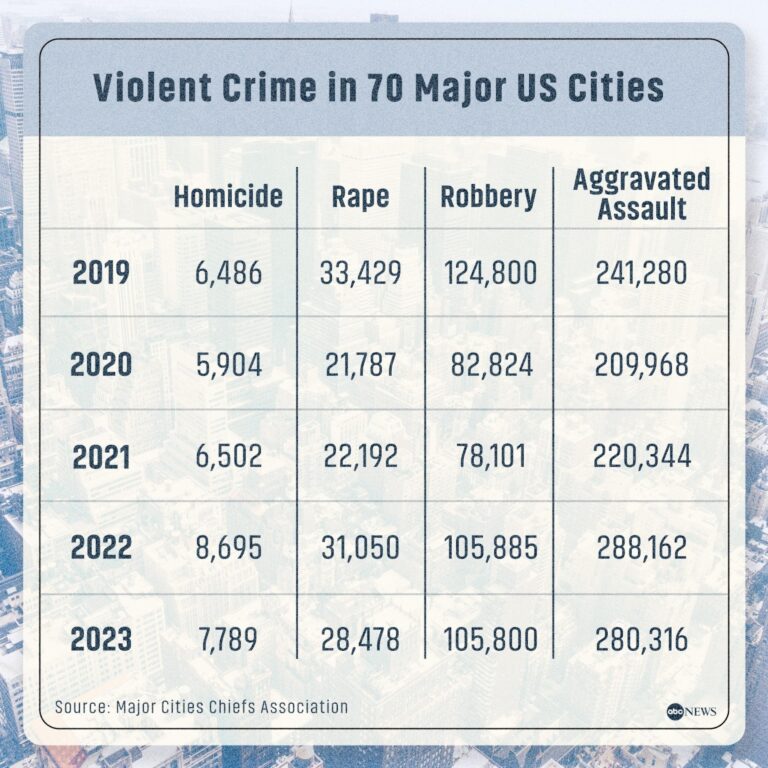In 2023, the 10 largest cities in the United States witnessed a significant and unprecedented surge in hate crimes, marking a troubling escalation in targeted violence and bigotry. According to a recent Axios report, this spike reflects deepening social divisions and raises urgent questions about public safety, law enforcement responses, and community resilience. This article delves into the data behind the rise, explores the factors driving this surge, and examines its broader implications for America’s urban centers.
Largest US Cities Face Unprecedented Rise in Hate Crimes in 2023
In 2023, major metropolitan areas across the United States witnessed a sharp and alarming increase in hate crimes, disrupting communities and raising urgent concerns among law enforcement and civil rights organizations. The ten largest cities, including New York, Los Angeles, Chicago, Houston, and Phoenix, reported surges that outpaced previous records by significant margins. Experts attribute this rise to a combination of heightened political polarization, economic stress, and the amplification of extremist rhetoric across social media platforms. These factors have manifested in a troubling uptick in violence and targeted attacks against marginalized groups.
Key trends observed in these cities include:
- Targets: Increased incidents against racial minorities, religious communities, and LGBTQ+ individuals.
- Locations: Public spaces such as transit hubs, schools, and places of worship saw more reported cases.
- Perpetrators: A combination of lone actors and organized fringe groups fueled much of the violence.
- Law enforcement response: Cities are launching new initiatives to improve hate crime reporting and community outreach.
| City | 2022 Hate Crimes | 2023 Hate Crimes | % Increase |
|---|---|---|---|
| New York | 435 | 627 | 44% |
| Los Angeles | 312 | 455 | 46% |
| Chicago | 280 | 400 | 43% |
| Houston | 150 | 210 | 40% |
| Phoenix | 107 | 160 | 50% |
Analyzing Root Causes Behind the Surge in Urban Hate Incidents
Several intertwined factors appear to be fueling the alarming rise in hate incidents across major urban centers. Economic instability and widening social inequities are creating fertile ground for heightened tensions among diverse community groups. Additionally, the politicization of race, religion, and identity issues has amplified divisive rhetoric in both online and offline spaces, normalizing hostility and sometimes inciting violence. Moreover, law enforcement challenges in accurately reporting and addressing hate crimes may also contribute to shifting patterns of incident visibility and frequency.
Data suggests a complex interplay of triggers, including:
- Economic Hardship: Job losses and housing insecurity disproportionately affect marginalized populations, increasing friction.
- Political Polarization: Heightened ideological divides contribute to scapegoating and social fragmentation.
- Social Media Influence: Viral misinformation and echo chambers escalate fear and prejudice.
- Community Relations: Eroding trust between residents and authorities complicates conflict resolution.
| Root Cause | Urban Impact |
|---|---|
| Economic Strain | Increased neighborhood tensions |
| Political Rhetoric | Polarized communities |
| Social Media | Amplified misinformation |
| Law Enforcement Gaps | Underreported incidents |
Impact on Communities and Local Law Enforcement Strategies
Communities across the 10 largest U.S. cities are grappling with heightened anxiety as hate crimes surge at an unprecedented rate. Neighborhood organizations and advocacy groups report increased demand for support services, including mental health counseling and community safety workshops. The rise in targeted violence has deepened divisions, prompting local leaders to call for unity and resilience amid growing tensions. Efforts to foster inclusivity are becoming more visible, with public awareness campaigns addressing the roots of hate and emphasizing solidarity across cultural and ethnic lines.
In response to the escalating threats, law enforcement agencies are revising traditional policing strategies to prioritize hate crime prevention and rapid response. Departments are implementing specialized hate crime units staffed with trained officers, coupled with enhanced collaboration with community stakeholders to improve reporting and trust. Technology is also playing a pivotal role, with surveillance enhancements and data analytics utilized to monitor hotspots and predict potential incidents. Below is a summary of key adaptations observed across major cities:
| Strategy | Key Components |
|---|---|
| Community Trust Initiatives |
|
| Specialized Hate Crime Units |
|
| Technology & Data Use |
|
Policy Recommendations to Address and Prevent Hate Crimes Moving Forward
To curb the disturbing rise in hate crimes across major urban centers, policy frameworks must be both proactive and inclusive. Enhanced community policing efforts emphasizing trust-building between law enforcement and marginalized groups are crucial. This strategy should incorporate cultural competency training, enabling officers to recognize and act against bias-motivated incidents more effectively. Additionally, municipalities need dedicated hate crime units equipped with specialized resources to swiftly investigate and prosecute cases, ensuring justice and deterrence.
Moreover, public policy must prioritize education and prevention through comprehensive programs that foster intercommunity dialogue and awareness. Schools, workplaces, and public institutions should implement curricula and training addressing the roots of prejudice and promoting empathy. Policies encouraging collaboration between civil society organizations, technology platforms, and government bodies can help track hate speech trends and mitigate online radicalization. Below is a summary of key recommended measures designed for immediate and sustained impact:
| Policy Focus | Key Actions | Expected Outcome |
|---|---|---|
| Law Enforcement | Bias training, specialized hate crime units | Improved reporting and prosecution rates |
| Education & Awareness | Anti-bias curricula, community programs | Reduced prejudice, enhanced social cohesion |
| Online Monitoring | Collaboration with tech firms, data analysis | Early detection and prevention of hate speech |
| Legislation | Stricter penalties, comprehensive hate crime laws | Stronger deterrence and victim protection |
In Summary
The unprecedented rise in hate crimes across the nation’s largest urban centers in 2023 marks a troubling trend that demands urgent attention from policymakers, law enforcement, and communities alike. As cities grapple with this surge, understanding the underlying causes and implementing effective prevention strategies will be critical to reversing the trajectory and ensuring safer, more inclusive environments for all residents. Continued monitoring and transparent reporting will remain essential tools in addressing this complex issue moving forward.







